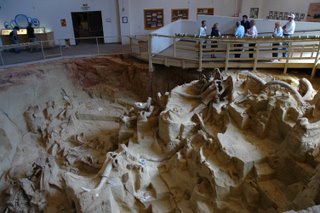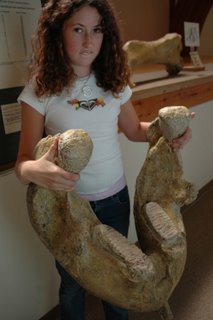
Some 27,000 years ago, a sinkhole formed in the hills of what would become South Dakota. It filled with mud that looked just like a wallow to the mammoths who ranged here. In they’d go -- but out they’d never come.
Not until 1974, that is, when a local developer was preparing to build on this site and spotted bones – bones that belonged to a mammoth.
In the years since, scientists directed by Dr. Larry Agenbroad have unearthed remains of 55 mammoths, along with early camels, a llama and an American lion. Aigenbroad estimates it will take another 30 years or so to unearth the rest. 
Unlike many digs, which are closed to non-scientists, The Mammoth Site is open to visitors, and about 100,000 come here each year to tour the actual sinkhole, where many of the tusks and skeletons remain in situ. They also get a glance at the laboratory where Aigenbroad and students clean the bones and make casts that can be used by schools and museums.
If you think of a mammoth as Manny in Ice Age, you’re partly right. Manny is a wooly mammoth, and while two of those are here, the rest are Columbian mammoths – not so wooly or cute perhaps, but bigger even than today’s African elephant.
So why did mammoths disappear some 11,000 years ago? Scientists aren’t sure, but Agenbroad notes three theories: disease, human intervention, climate change. And then there’s the fourth, less scientific theory: The extraterrestials got ‘em. Anything seems possible.
----------
Photos: Top, the sinkhole that is The Mammoth Site; a tour volunteer holds a life-size cast of a mammoth mandible.
Monday, September 04, 2006
Mammoth undertaking
Posted by
DARCOS CRUZ
at
9:42 PM
![]()
![]()
Subscribe to:
Post Comments (Atom)

No comments:
Post a Comment